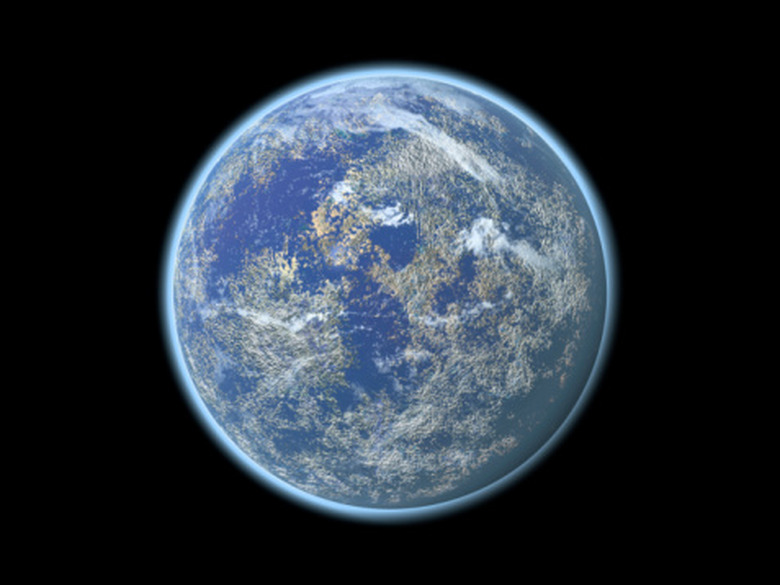What Is The Order Of The Planets From Hottest To Coldest?
The order of planets from hottest to coldest is almost in order of its proximity to the sun, because the sun is the primary heat source. However, another factor that effects a planet's atmospheric temperature is the gases that make up the atmosphere. Gases like carbon dioxide cause a greenhouse effect trapping heat in.
Hottest
Hottest
Venus' atmosphere consists of carbon dioxide and nitrogen, with clouds of sulfuric acid droplets.The greenhouse gases in Venus' atmosphere trap heat and make it so hot that you can melt lead. In fact, any of NASA's exploratory spacecraft that has landed on Venus has only been able to last for a few hours. With atmospheric temperatures of 864 degrees Fahrenheit, the second planet is the hottest.
Cool
Cool
In photos of Mars, you can see the ice in the atmosphere. Due to its tilt, Mars has seasons like Earth. In the winter, it can go as low as -125 degrees Fahrenheit. The current temperatures and atmospheric conditions make it impossible for water to last very long on the planet – making it doubtful that life exists on Mars. However, scientists have found evidence that water once existed on the planet.
On parts of Earth, it can get as cold as -126 degrees Fahrenheit, similar to Mars' coldest temperatures.
Cold
Cold
As the planet closest to the sun, you might expect Mercury to be one of the hottest planets and it is. It is also one of the coldest. Because Mercury doesn't have an atmosphere, the side of the planet that faces the sun can reach temperatures of 800 degrees, but on the side that faces away from the sun and its lowest temperature can drop to -290 degrees Fahrenheit.
Known for its rings made of ice chunks and rock, Saturn's lowest temperatures can get to -288 degrees Fahrenheit. If you weigh 100 pounds on Earth, you will weigh approximately 107 pounds on Saturn. The atmosphere is made primarily of helium and hydrogen
The biggest planet in our solar system contains a system of moons and rings that make it like a minisystem. Jupiter has 50 moons – four large moons and 46 smaller moons. The massive planet can get as cold as -234 degrees Fahrenheit. Like Saturn and Uranus, the atmosphere is made up of hydrogen and helium.
Coldest
Coldest
With a temperature of -357 degrees Fahrenheit, Uranus is the coldest planet in the solar system. The atmosphere is made up of methane, hydrogen and helium – the methane giving it its green look. Most of the mass of Uranus is made up of water, methane and ammonia ice.
Since Pluto was classified as a dwarf planet in 2006, Neptune became the farthest planet from the sun. It is no surprise that, 30 times farther from the sun than Earth, Neptune is one of the coldest planets. It has a temperature of -214 degrees Fahrenheit. The atmosphere, similar to Uranus, consists of hydrogen, helium and methane. Scientists believe that another unknown gas exists in the atmosphere, because it appears to be a bright blue, as opposed to the Uranus' blue-green that comes from the methane.
Cite This Article
MLA
Starr, Wanda. "What Is The Order Of The Planets From Hottest To Coldest?" sciencing.com, https://www.sciencing.com/order-planets-hottest-coldest-8696962/. 24 April 2017.
APA
Starr, Wanda. (2017, April 24). What Is The Order Of The Planets From Hottest To Coldest?. sciencing.com. Retrieved from https://www.sciencing.com/order-planets-hottest-coldest-8696962/
Chicago
Starr, Wanda. What Is The Order Of The Planets From Hottest To Coldest? last modified March 24, 2022. https://www.sciencing.com/order-planets-hottest-coldest-8696962/
